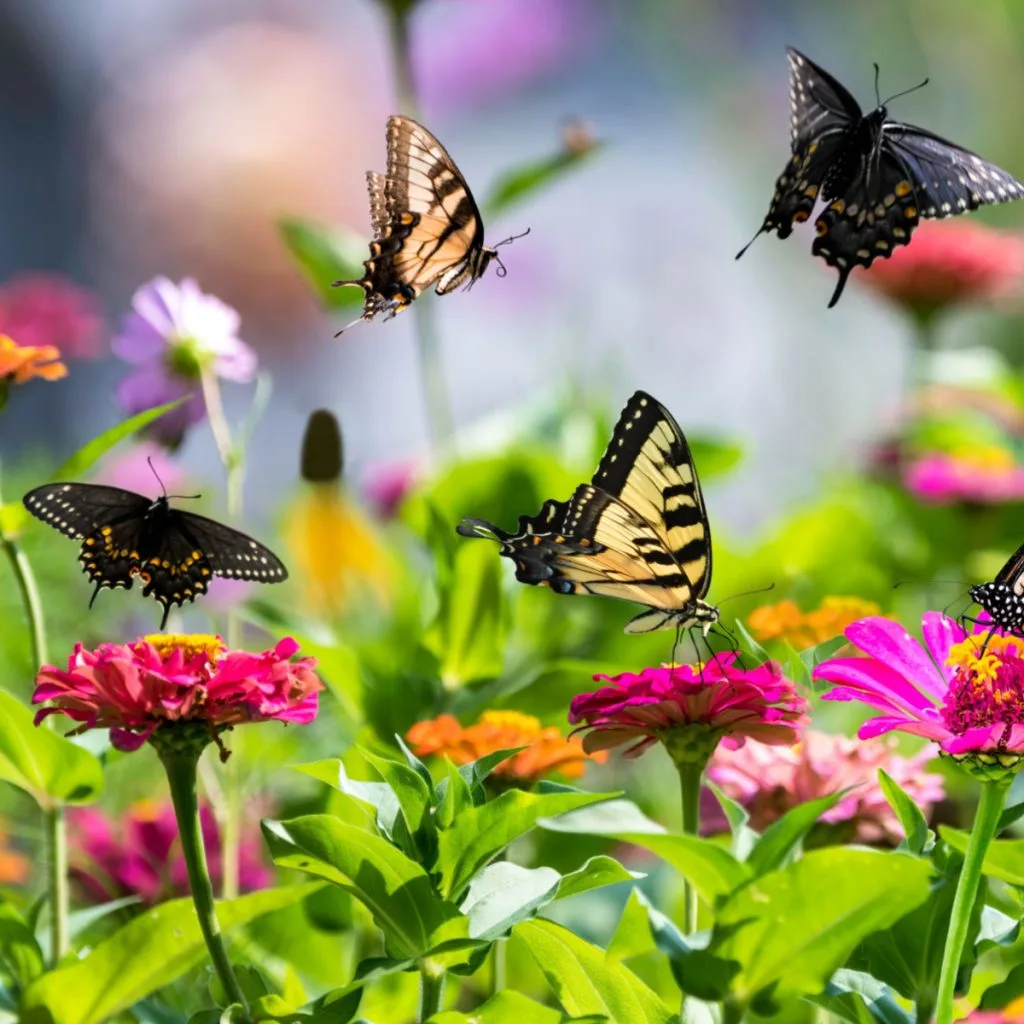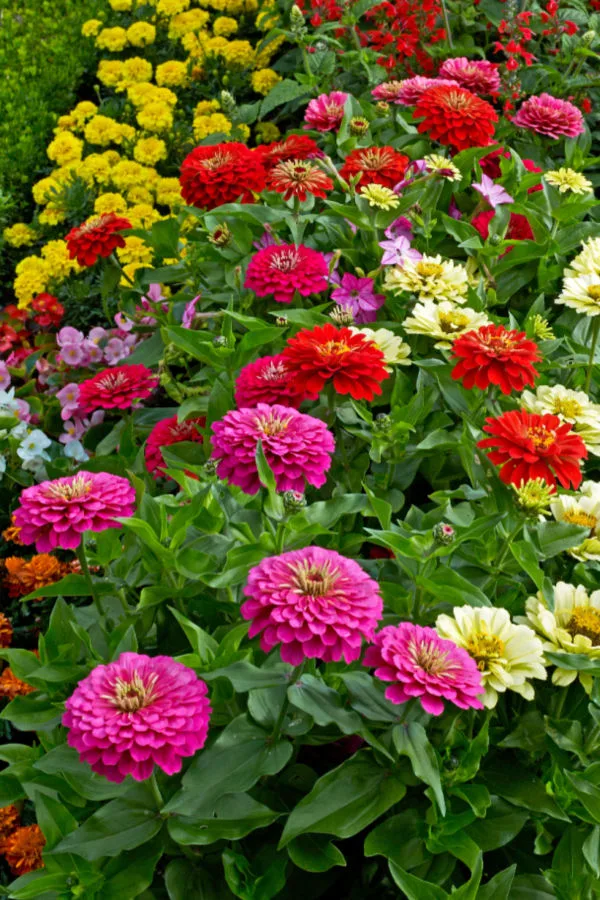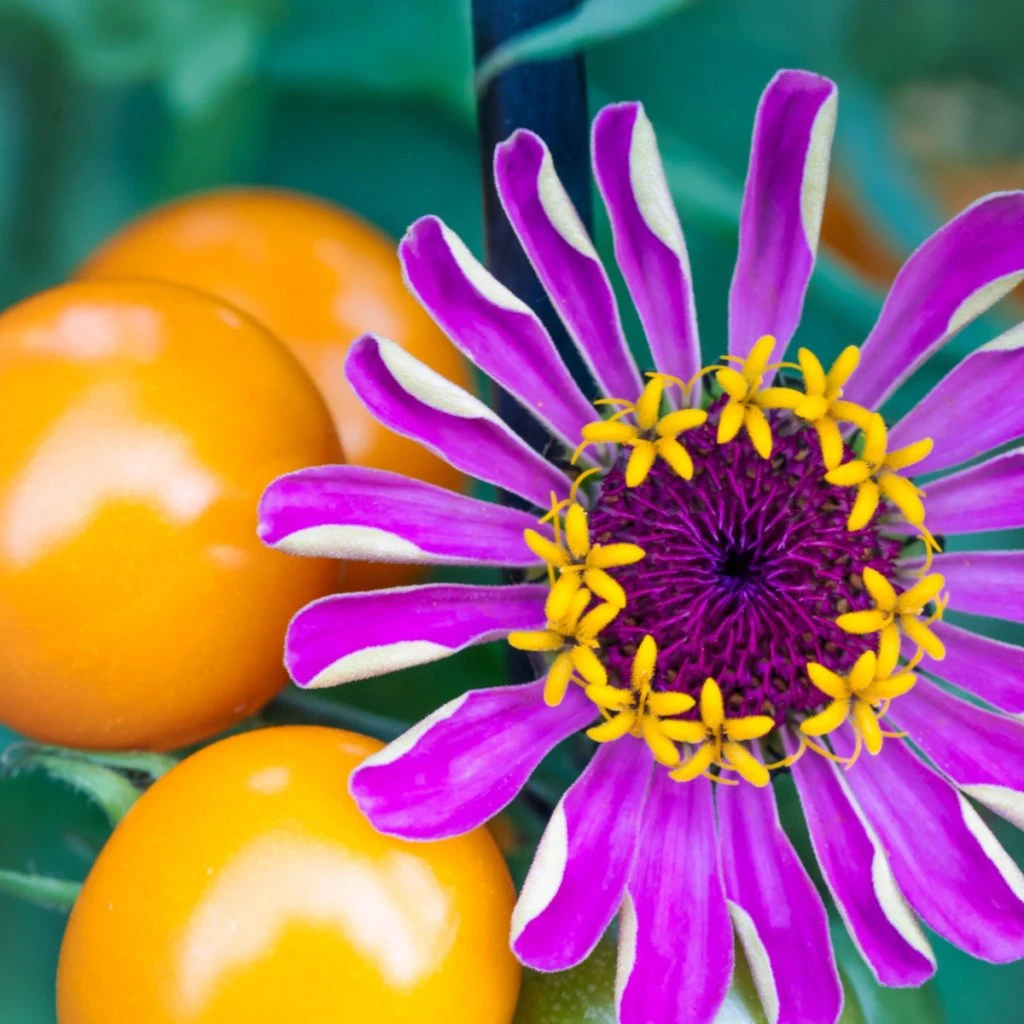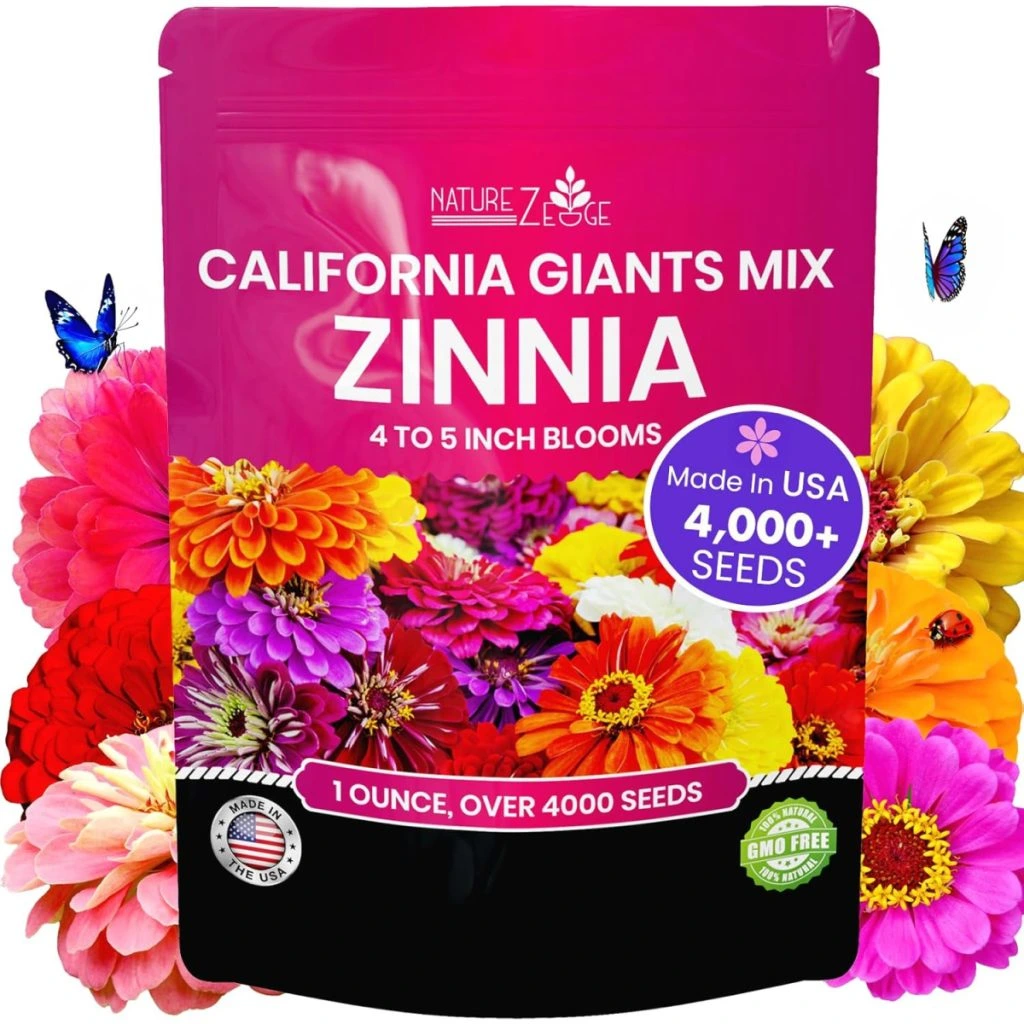Did you know that one of the best things you can do for your vegetable garden this year is to grow zinnias in it? Not only will it fill your garden with color and beauty – but it will also bring a tremendous amount of pollinators and beneficial insects to your growing space – all with little to no effort.
Zinnias have long been admired for their big, showy blooms. With varieties that flower in every color of the rainbow, they look sensational growing in flowerbeds or along walkways and fence lines. Zinnias also happen to look equally beautiful planted in raised beds, containers and pots. But it’s when they grow in a vegetable garden that their real power comes to light!
Although you might have thought it was solely for beauty, it is actually a common practice among many gardeners for the benefits zinnias bring to their vegetable plants. As it turns out, all of those massive, colorful blooms aren’t just pretty. They also happen to attract a slew of pollinators and beneficial insects!

Why You Need To Grow Zinnias In Your Vegetable Garden
Beyond their stunning looks, zinnias have a lot of qualities that make them perfect for growing in and around vegetable gardens. For starters, they are easy and economical to grow directly from seed.
There is no need to purchase transplants with zinnias, you can simply sow seed right into your garden space. They germinate fast – and grow with little help. Even better, zinnias are extremely drought and heat resistant. In fact, once established, other than a bit of regular deadheading, they require very little in the way of maintenance.
If all of that wasn’t enough, zinnias also happen to be high on the list of plants that deer steer away from as well. But it’s what they attract to your garden space that is truly helpful – and that all starts with a long list of pollinators!
Bring On The Pollinators
Much like with marigolds, nasturtiums and other popular flowering companion plants, zinnias provide a whole host of added benefits for the plants growing around them. Zinnias are a major attraction for honey bees, one of natures greatest pollinators of all. In fact, honey bees are responsible for pollinating well over 100 fruit and vegetable crops. And they love zinnias!

Once honey bees find a source of food, they will keep coming back again and again until it disappears. Because zinnias stay in bloom constantly, when they are planted near or in your garden, it means honeybees are visiting them and your other garden plants each and every day.
Butterflies, Birds & Wasps
In addition to the honey bee, zinnias attract other important pollinators to the garden as well, like butterflies, humming birds and wasps. All three help to disperse and distribute pollen as they visit to feed on the blooms of the zinnia, and by doing so, help increase harvest totals of your vegetable crops.
In addition to helping pollinate, wasps also happen to be one of the best natural defenses against the tomato hornworm and aphids. Wasps actually lay their eggs on the hornworms, which ultimately kills them, helping to keep your plants safe in the process. See: How To Find Tomato Hornworms – And Save Your Tomato Plants!
But it doesn’t stop there. Zinnias also attract huge numbers of ladybugs. And when it comes to devouring deadly mites and aphids, ladybugs are at the top of the list. A single lady bug can eat an entire colony of three to five thousand aphids in its lifetime, protecting tender garden plants in the process.

How To Plant & Grow Zinnias In Your Vegetable Garden With Ease
With all of those benefits, it’s easy to see why you should be planting zinnias near your vegetables. Where you place them in your garden is really a matter of personal preference. As long as they are close, they will bring in the help!
Many gardeners like to plant them along an edge in a row. This mass planting style not only calls in a big amount of helpful insects and pollinators, but can also add a mass of color and beauty to your vegetable garden space. You can also inter-plant among your vegetable rows as well.
Sowing a few seeds to come up between your tomatoes and peppers brings beneficial insects right near your plants. If space is at a premium, planting in containers and placing them around your garden is a great option as well.
Planting From Seed
No matter where you grow them, perhaps the best part of planting zinnias in or near your garden is just how easy they are to plant and maintain. Zinnias are extremely easy to grow from seed, which is both fast and inexpensive compared to planting transplants.
Zinnias are actually not well-suited for transplanting. As transplants, they often struggle to re-establish their roots into new surroundings. For this reason, it’s best to sow directly into the soil or containers. The good news is that zinnias germinate and grow quickly, so it doesn’t take long for blooms to appear.
For best results, wait to plant until the soil and air temperatures have warmed to a solid 70°(F) during the daytime. It’s important not to plant zinnias too early in the spring. Be sure to wait until all threat of frost has passed and the soil has warmed.
Plant For Sun
Plant zinnias in full sun in rich, fertile soil that drains well. If there is one drawback to growing zinnias, it is that they are susceptible to powdery mildew. By giving them plenty of sunlight and well draining soil, the risk of mildew will be greatly reduced.
Plant seeds shallow, no more than 1/4 to 1/2 inch deep into the soil. Spacing will depend on how and where you grow. For row or hedge planting, allow 6 inches between plants and at least 18 inches between rows. For containers, plant seeds 2 to 3 inches apart. As for varieties, there are a whole slew to choose from. Affiliate Link: NatureZ Edge Zinnia Seeds for Planting Outdoors – California Giants
If planting to fill an entire bed space, allow at least 6 inches between seeds and seedlings in all directions. This will allow them to grow together without too much crowding. Overcrowding plants can lead to mildew issues if there is no airflow between the foliage in a large mass planting.
Water & Long Term Care
Zinnias are drought and heat tolerant. They actually tend to suffer more with too much water than not enough. Water tender young seedlings only when the soil becomes completely dry to the touch. Once established, plants will rarely need watering unless extremely dry conditions persist.

If planted in containers, they will require more regular watering. Be sure to allow the potting soil to dry out between watering to keep the roots from sitting in overly moist conditions.
Once young seedlings emerge through the soil, mulch to help regulate soil temperatures and control weeds. Zinnias do not like to compete for nutrients. A three to four inch layer of mulch will help to keep bed spaces clear and your plants in good health.
Zinnias will continue to produce as long as the spent blooms are cut back from the plants. They are well-known as a cut and come again plant, meaning if you keep cutting them, they will keep on producing. It’s just one more reason they are a great choice to grow for cut flowers. For more great tips on growing zinnias, be sure to see: The Best Way To Keep Zinnias Blooming All Summer – And Even Into Fall!
Here is to taking a little time to sow and grow zinnias in your vegetable garden this year. And – to having a more productive garden than ever!
This Is My Garden
Follow Our Facebook Page For Great Gardening Tips And Advice! This Is My Garden Facebook Page
This Is My Garden is a garden website created by gardeners, for gardeners. Jim and Mary Competti have been writing gardening, DIY and recipe articles and books and speaking for over 15 years from their 46 acre Ohio farm. They publish three articles every week, 52 weeks a year. Sign up today to follow via email, or follow along!

